Prior post: https://blog.bucksvsbytes.com/2025/04/24/road-trip-europe-iii-25-04-15-25-04-19-valencia-spain
[NOTE: Some displayed images are automatically cropped. Click or tap any photo (above the caption) to see it in full screen.
My next stop is in the Murcia region, a section of seacoast and mountains seemingly lesser known to international tourists. I’ve been invited by Elias, a rural Servas host. Following directions to Totana, I find a finca, an estate of sorts, operated as a cooperative. My lodging is a rustic but fully equipped log cabin — a rarity in Spain, which is not known for forests of tall, straight-trunked trees. There is an ample supply of e electricity, all supplied by solar panels and storage batteries.
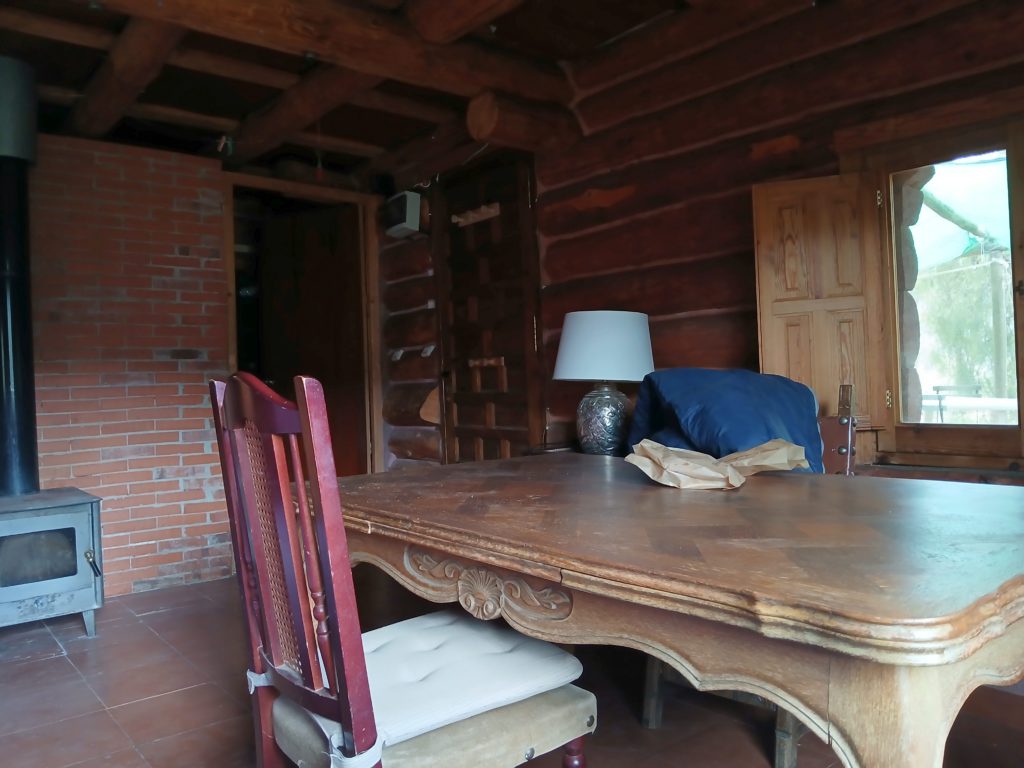
Elias is my host but the cabin belongs to another resident, Silvan. Shortly after I arrive, two young Italian women, Laura and Arianna, pull up in a rental car. The three of us will be sharing the cabin tonight. Elias takes us out on an evening tour. We’re in an area of rugged mountains, the highest almost 5,200 feet, so the scenery from the valleys is very impressive. After visiting Totana, an out of the way mountain community where some small tourist lodgings are being developed, we wend our way to the nearby town of Aledo, with the usual complement of churches, steep alleyways, and a small fortress and watchtower.
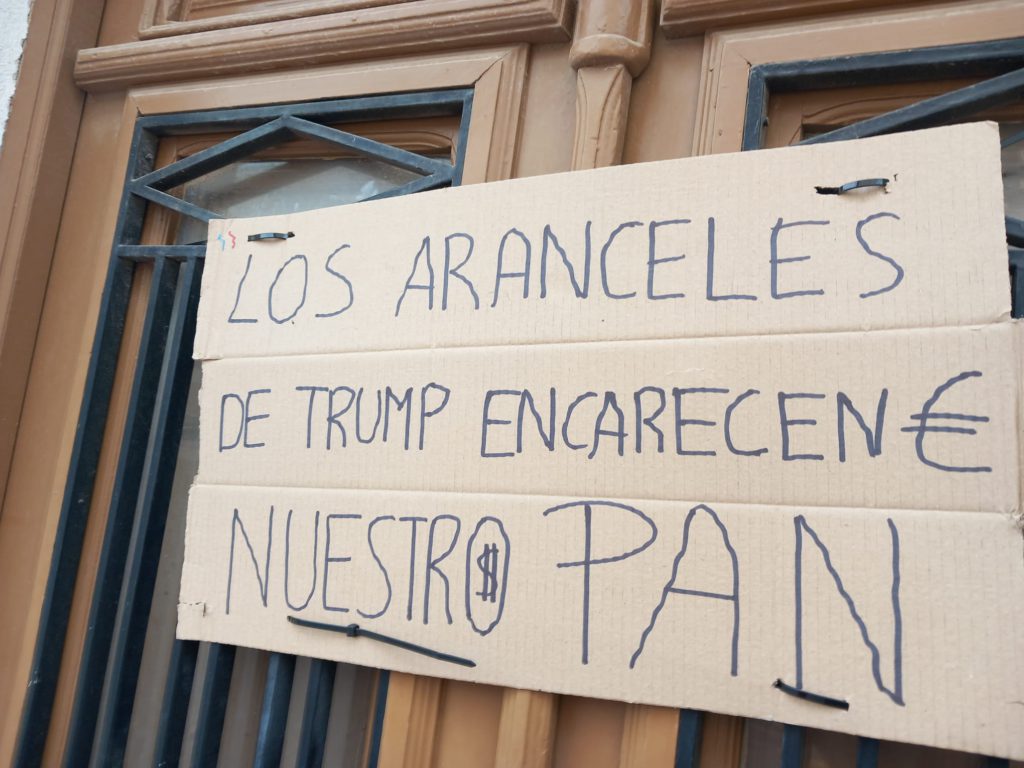
The town is positioned on a height, so the views are extensive.
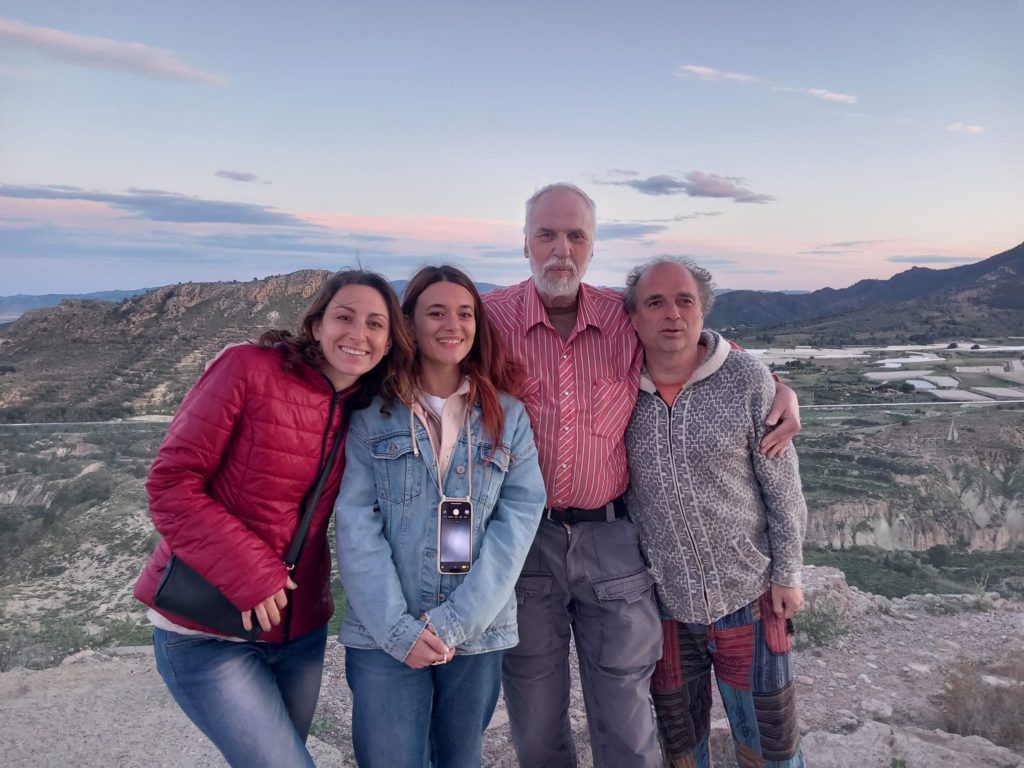
Below, I see many acres of lowland crops, all draped in white cloth shelters. Elias tells us they are table grapes, protected from the scorching summertime sun that will arrive all too soon.
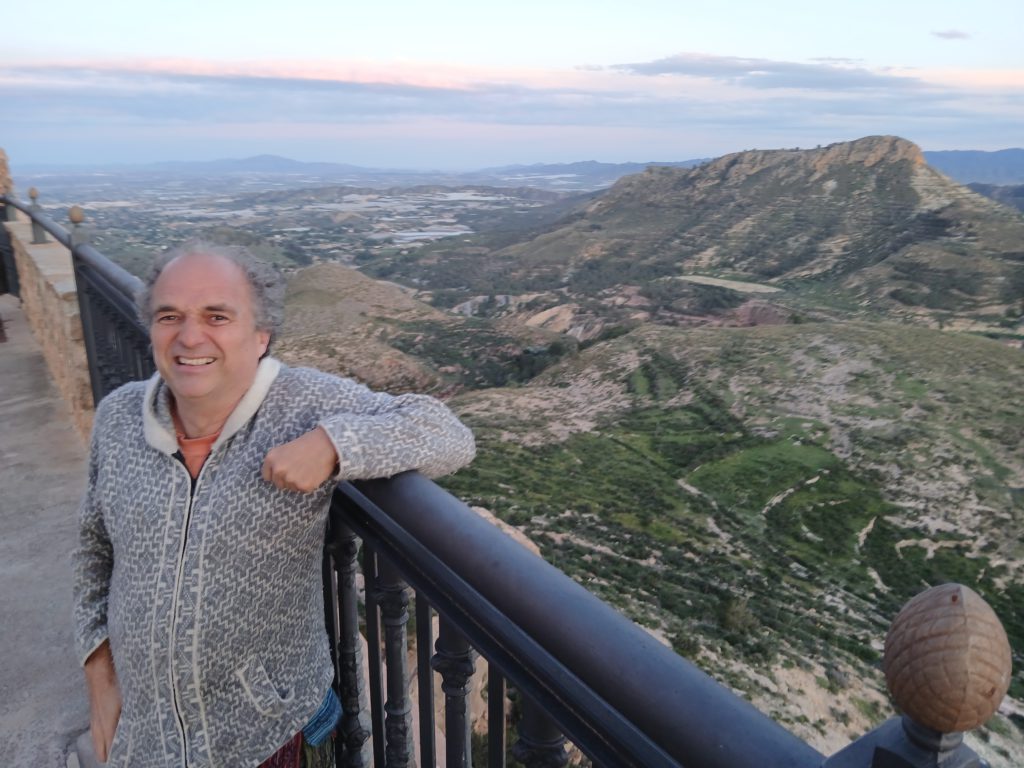
As night falls, we find respite from the cool wind in a village bar. Silvan joins us and there, amid the lively conversation of the locals, we sample various tapas and consume an array of beverages well into the evening. One area specialty is Asiático coffee, a layered combination of coffee, condensed milk, and cognac. As its name evokes, it’s similar to Thai coffee, sweet and creamy. Asiático and black coffee are a couple of universes apart.
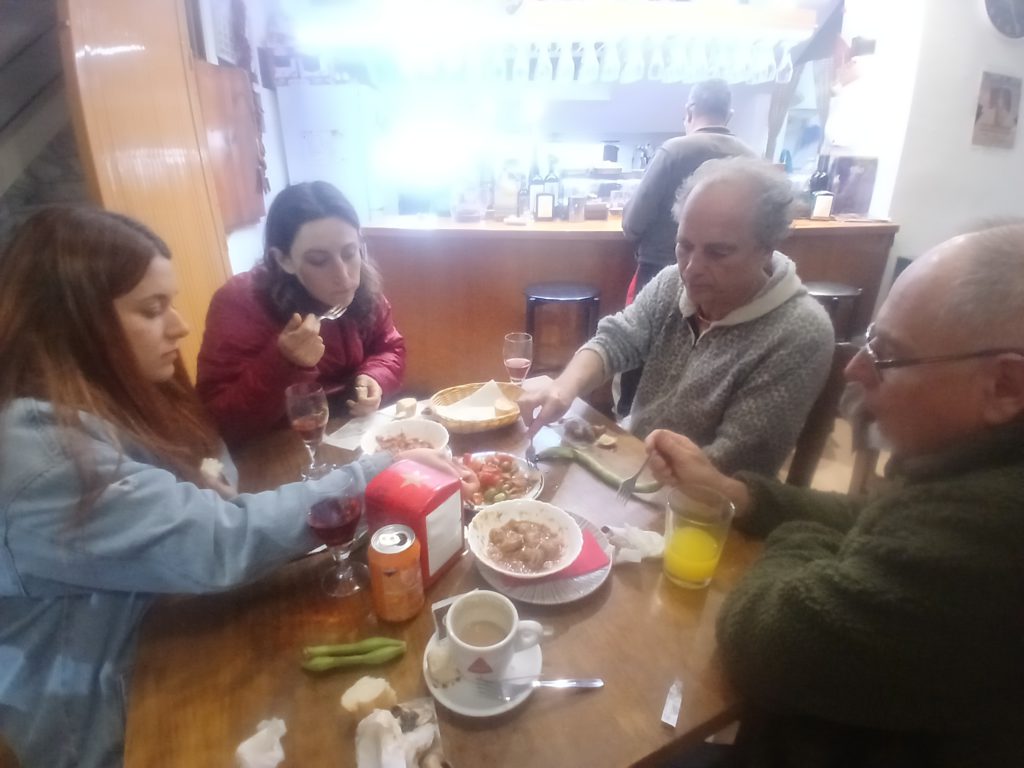
By the time we return to the upland cabin, everyone is ready to rest. The two women, apparently to Elias’ surprise, are only staying one night — contrary to usual Servas custom. He has made plans for tomorrow, but they explain they are on a tightly scheduled vacation and have to move on.
In the morning, the four of us travel in two cars to Estrecho de la Arboleja, a modest Utah-style slot canyon. From the parking lot, we descend many steps to the valley floor, passing elaborate abandoned aqueducts once used to guide canyon water to downstream crops, and then work our way along the narrow bottom, the footing sometimes wet and difficult.
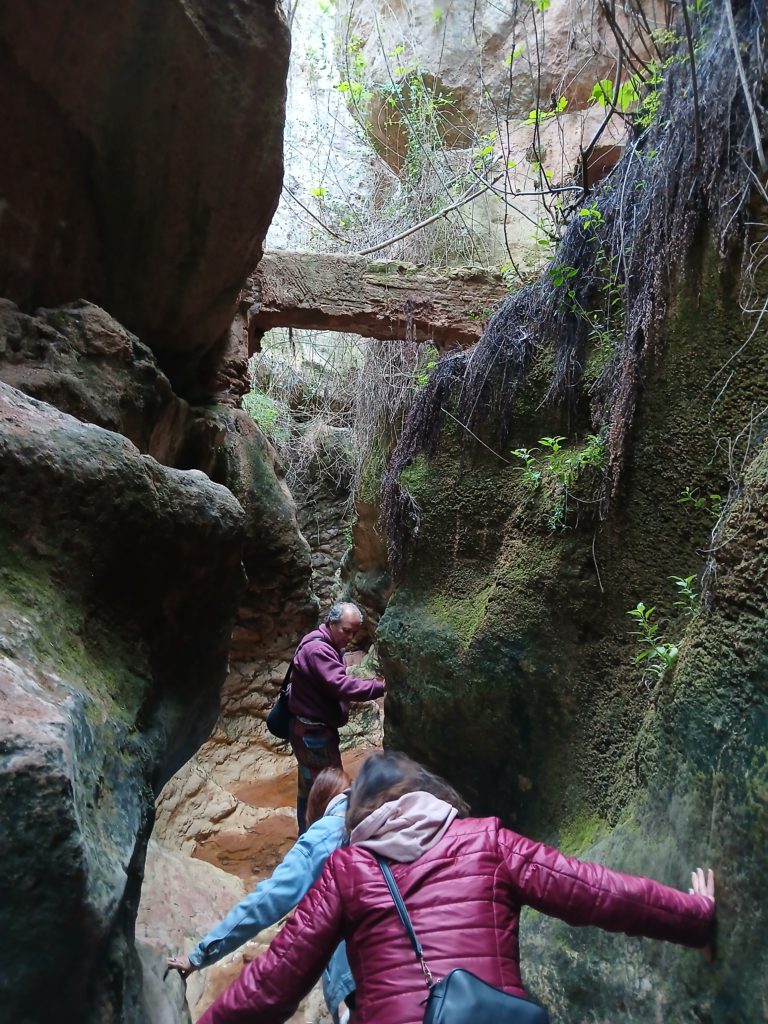
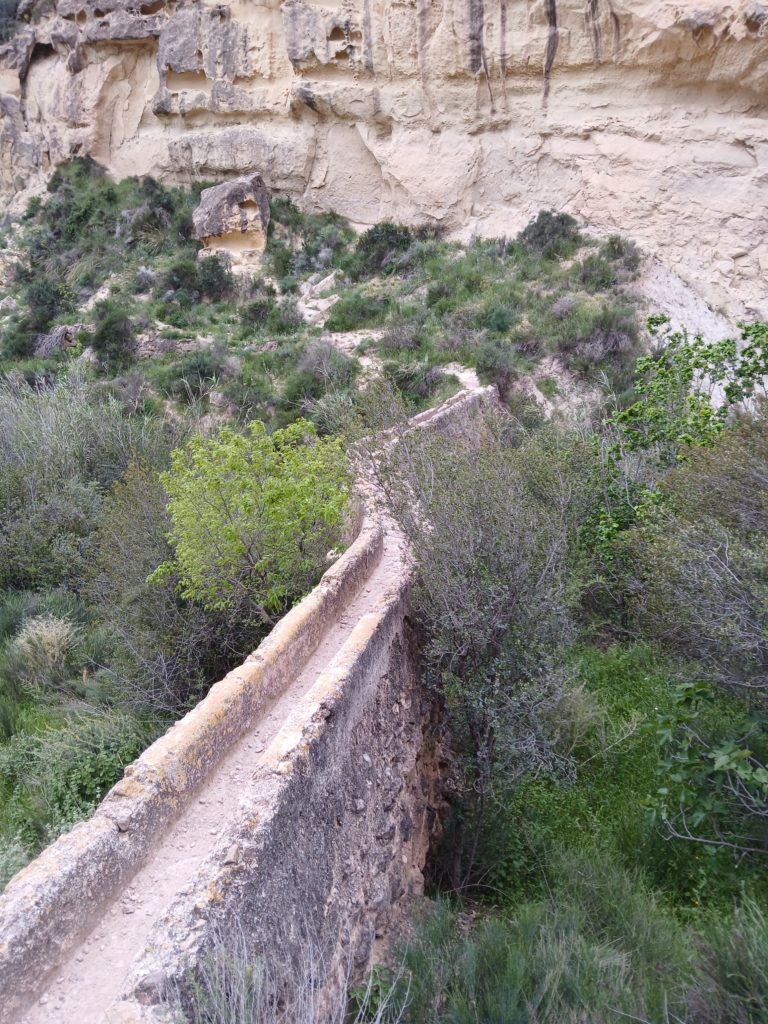
After exiting and climbing back up to plateau level, the women depart for Granada, while Elias and I make a second visit to Aledo.
It’s Easter Sunday and today is the town’s elaborate Easter procession. After a leisurely breakfast in another town bar, Elias and I climb the streets to the church located near the town’s highest point.
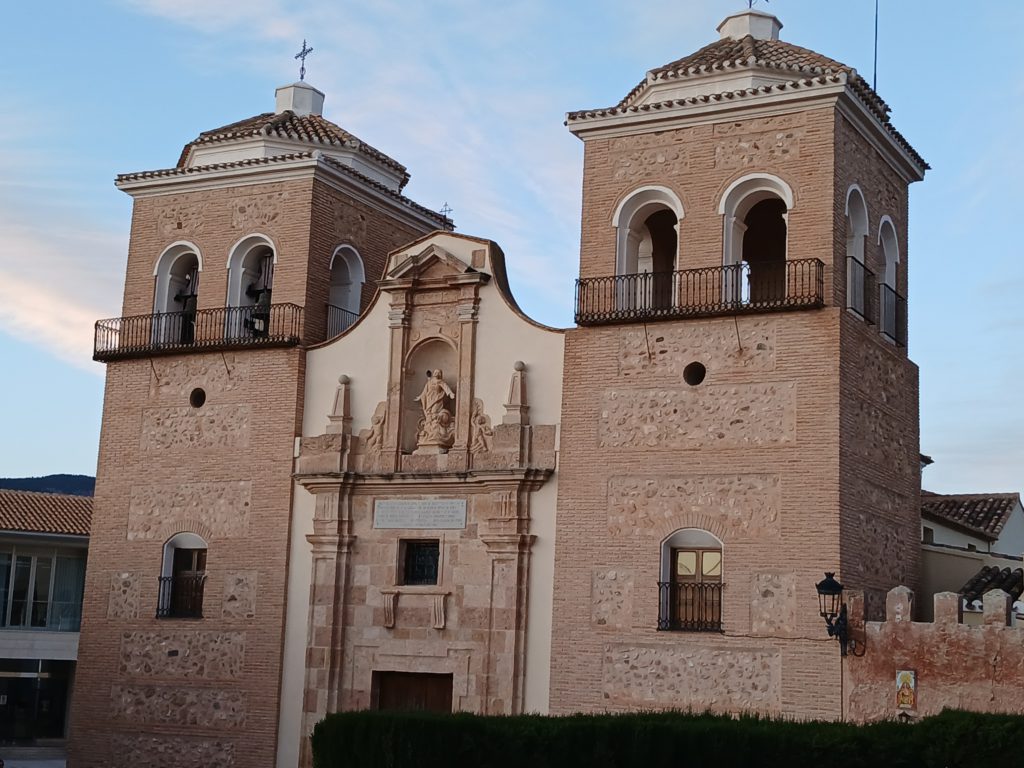
Waiting patiently through intermittent sprinkles and sun for the parade to launch, Elias leads me indoors where I find myself in the middle of a Catholic mass — communion, homily, the whole bit. There’s a chorus singing up in the balcony but instead of traditional hymns, they stick with modern music, among them George Harrison’s “My Sweet Lord” and Leonard Cohen’s “Hallelujah”.
The procession finally begins about an hour late. There are marching bands, many young people dressed as Roman centurions (somehow, these are primary symbols of Christianity), and three religious floats carried on the shoulders of large, carefully rehearsed teams. Various bell peals indicate “lift”, “stand”, “set down”, “march in place”, and “move forward”. It all works as the heavy floats avoid crashes and mishaps, despite the growing heat and sun.
After the drive back to the cabin and a short break, Elias takes me on a tour of the finca. We walk up to a high point where a large, plastic lined reservoir has been constructed. The water is pumped in from a well and distributed across the property by a gravity system. I meet Fran, who grows a variety of vegetables, and Antonio, who has commercial lemon trees, and his two children, Sofia and Samuel. Sylvain has made 2 short appearances, but is apparently quite busy. When we return to the cabin, I rustle up some late lunch or early dinner from my perishable supplies, ground beef and cheese, and Elias and I eat outside. That pretty much ends the long day’s activities.
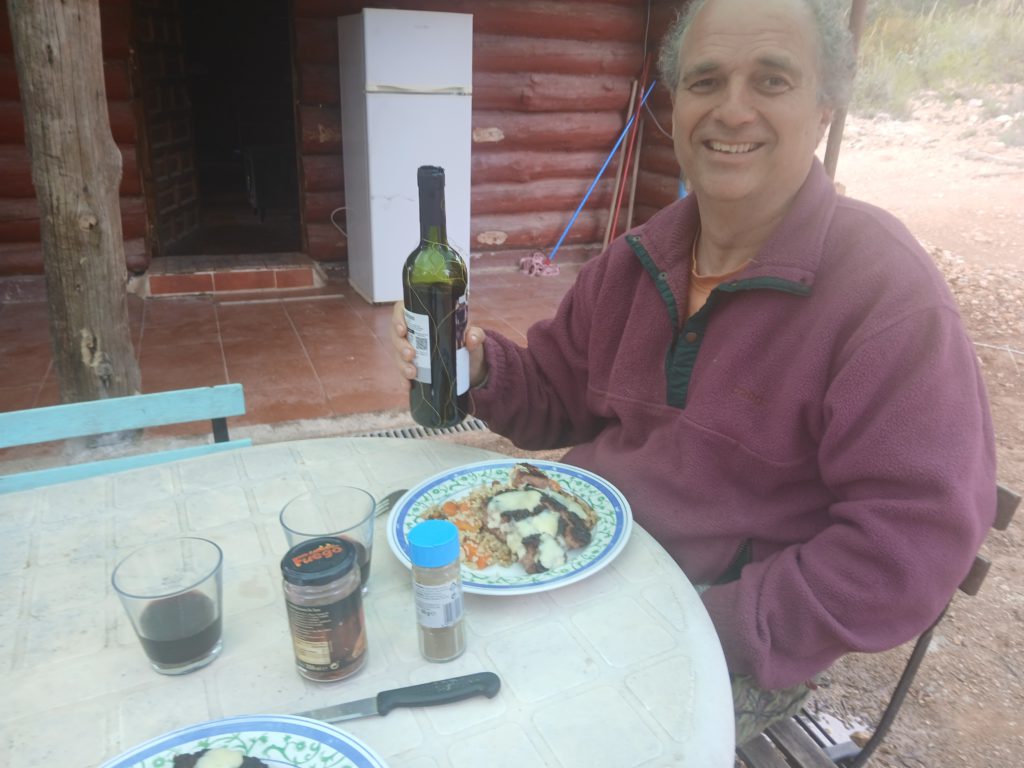
Monday morning, Elias brings over some breakfast and late in the morning we drive up into nearby Sierra Espuña Regional Park. It’s a well kept unit with interpretive signs, trails, and turnouts. The highest point is over 5,000 feet, a respectable elevation in most of Spain. A well engineered, paved road winds its way scenically ever upward.
At about 4,600 feet, a side trail gives access to a curious feature, Los Pozos de Nieve (The Snow Wells). For about 400 years, ice for the lowlands was made here by a labor intensive process. As many as 25 large structures consisting of excavated pits, each topped with a tall, above ground stone dome were built here. Much of the Spanish population has always lived in the coastal lowlands, where temperatures have been too warm for natural refrigeration. Lacking frozen ponds that, during New York winters, were a limitless source of ice, Murcians created whole mountain communities to make ice as best they could. One part of each pozo’s crew would collect snow from the ground and dump it in the well. Another group manually tamped down the stored snow to remove the air and allow it to freeze into denser ice. The final group hurriedly transported the ice many miles to warehouses for sale. Even though most of this movement happened during the coldest hours of the night, transportation losses were about 50%. This torturous process ended in 1926 when the first commercial ice manufacturing plant was established in Murcia. Today, the pozos are protected in the park and a couple have been restored to their original form for educational reasons.
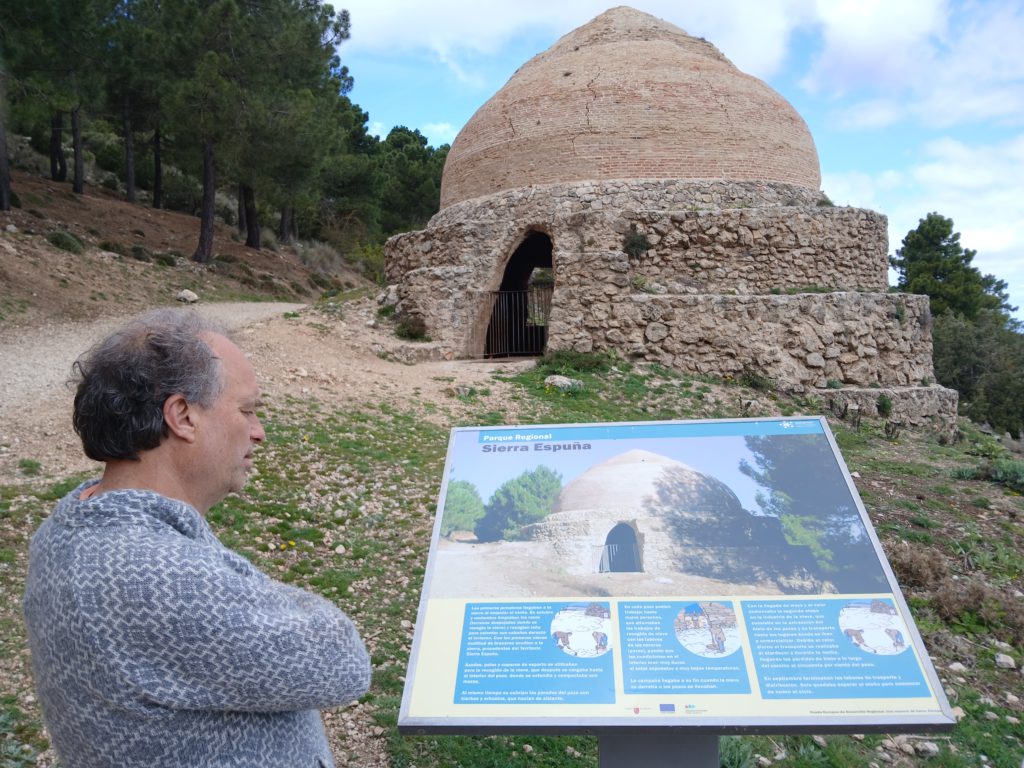
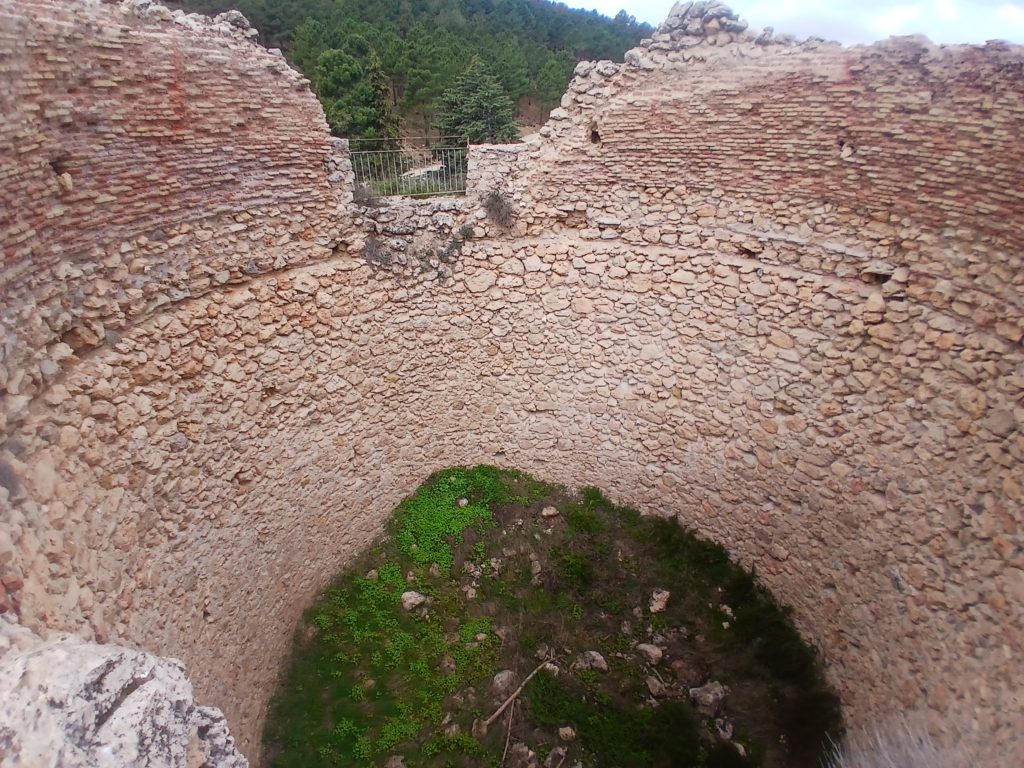
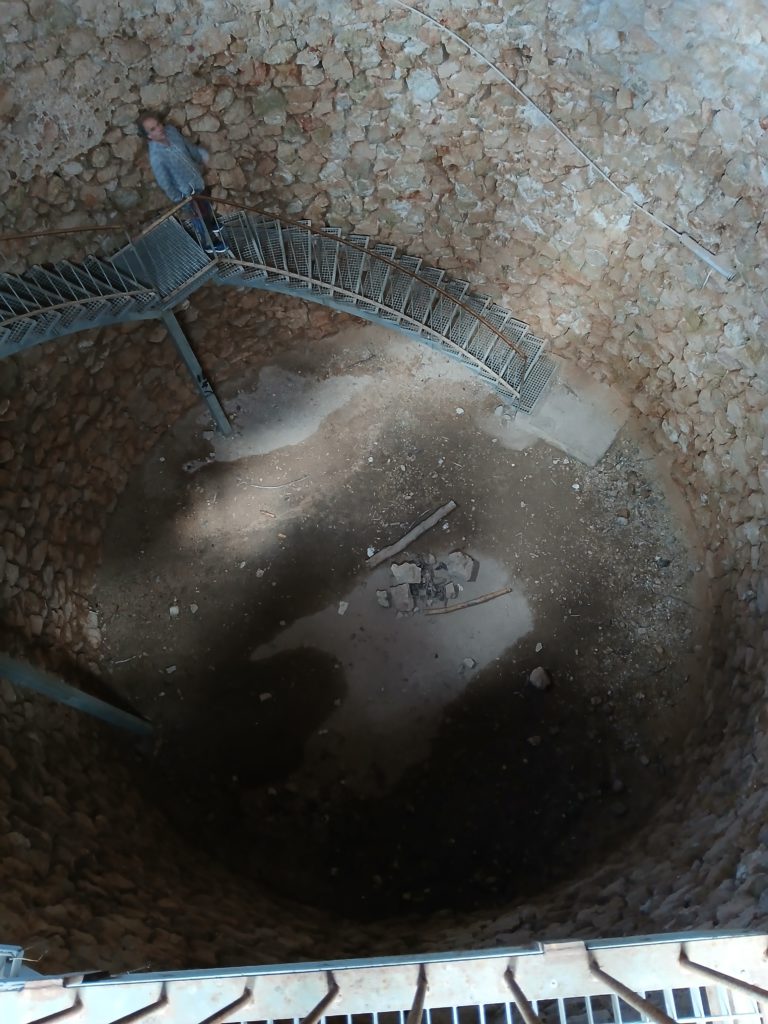
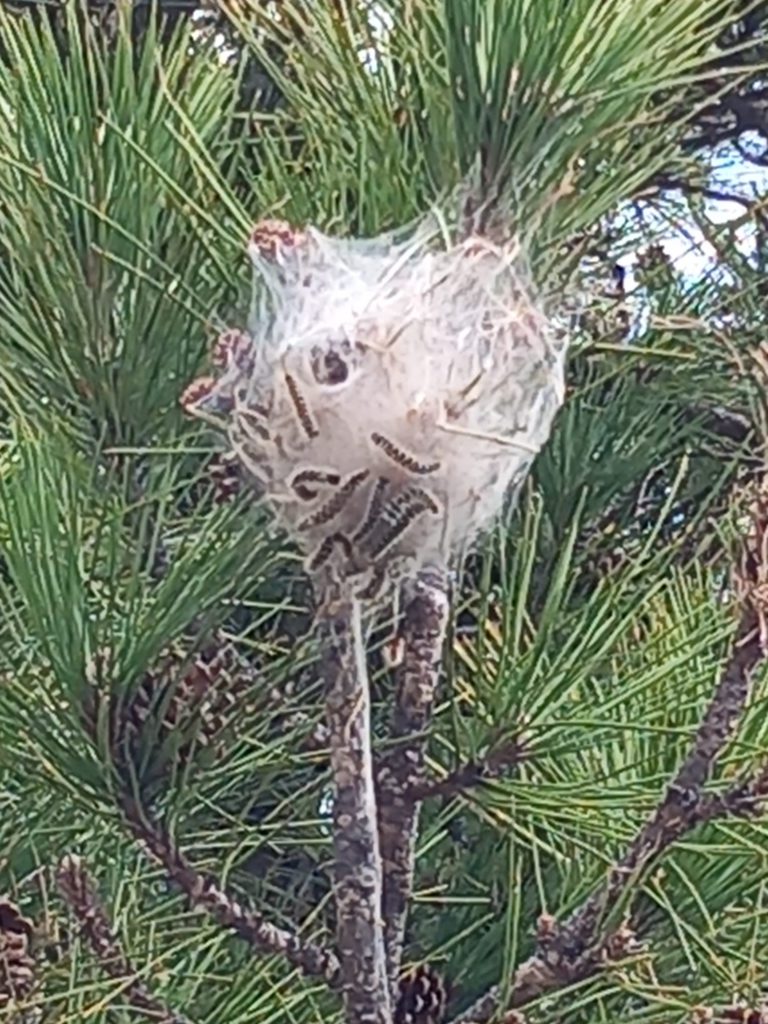
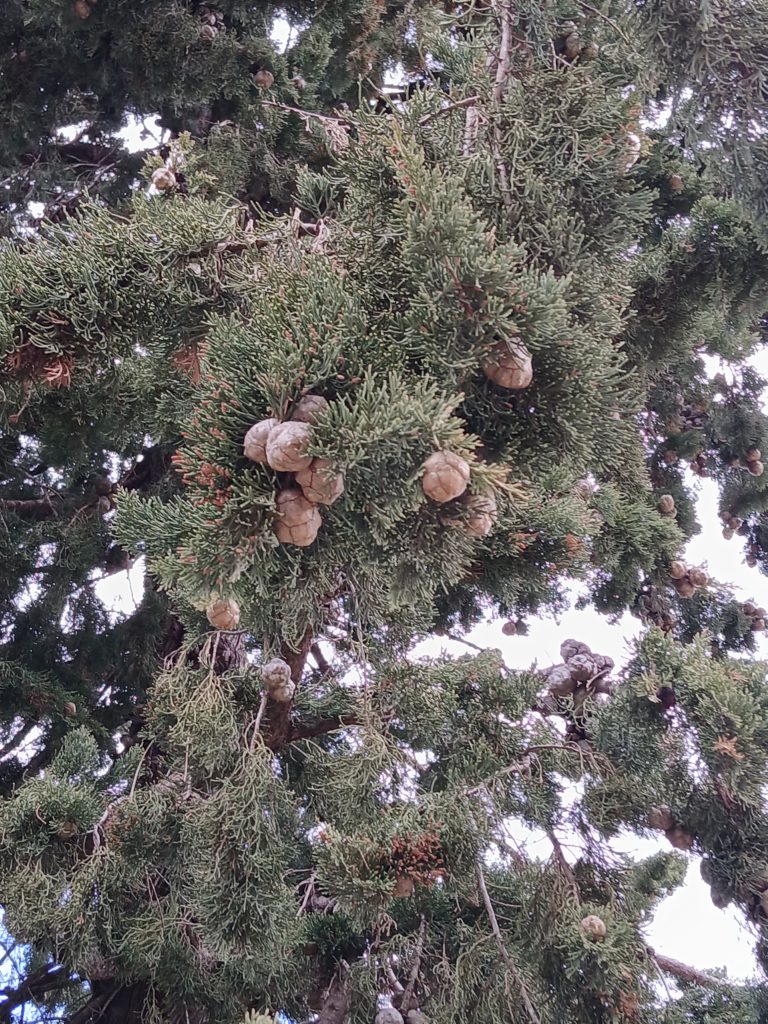
Back in the car, we continue upward on the winding road. On the mesa-like top of the mountain is a prominent military installation that’s a combination of defense monitoring and air traffic control. I breeze past the first two signs warning against unauthorized vehicles, but near the summit at the third one, which includes “No Trespassing” in English, I decide the risk of arrest is getting too great, so we appreciate the far ranging views from there and head back down off the mountain.
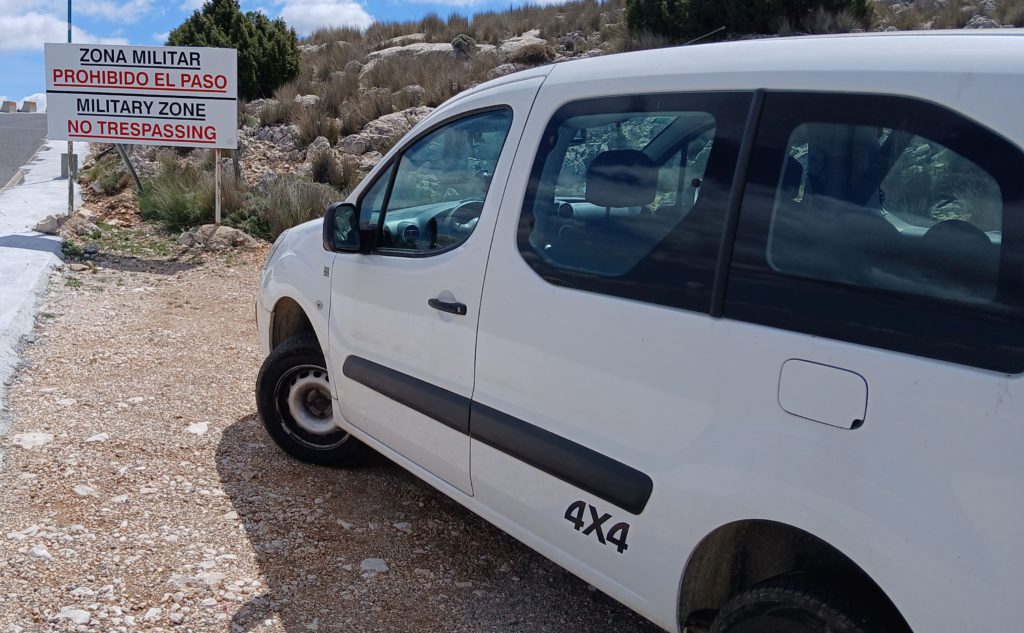
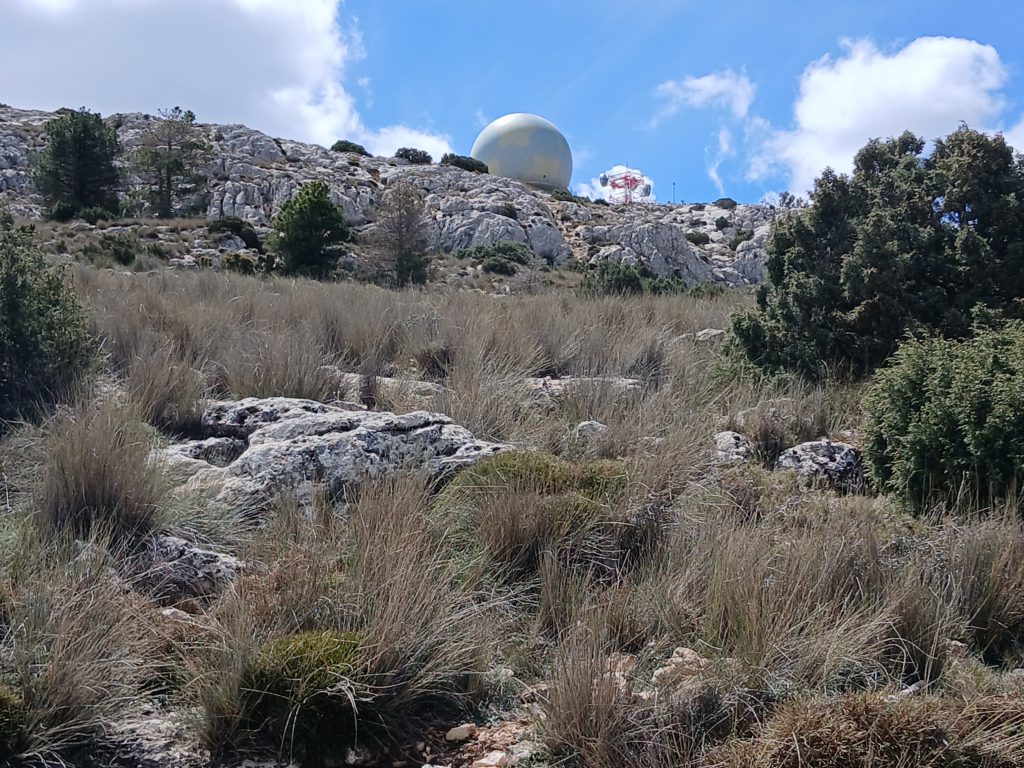
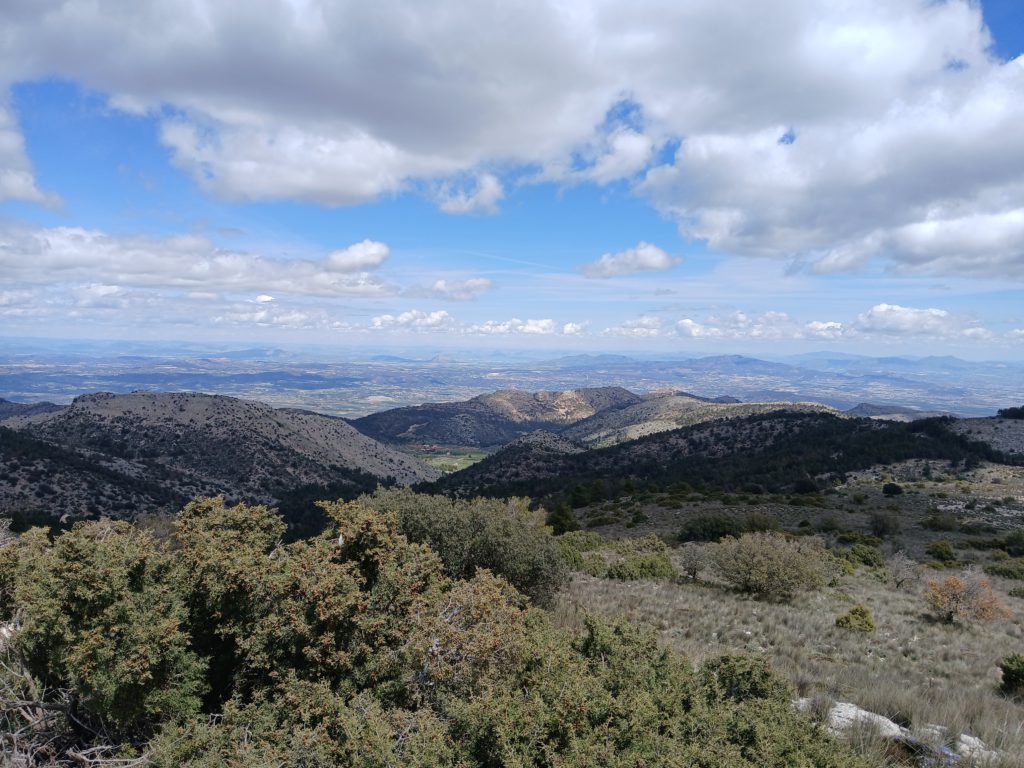
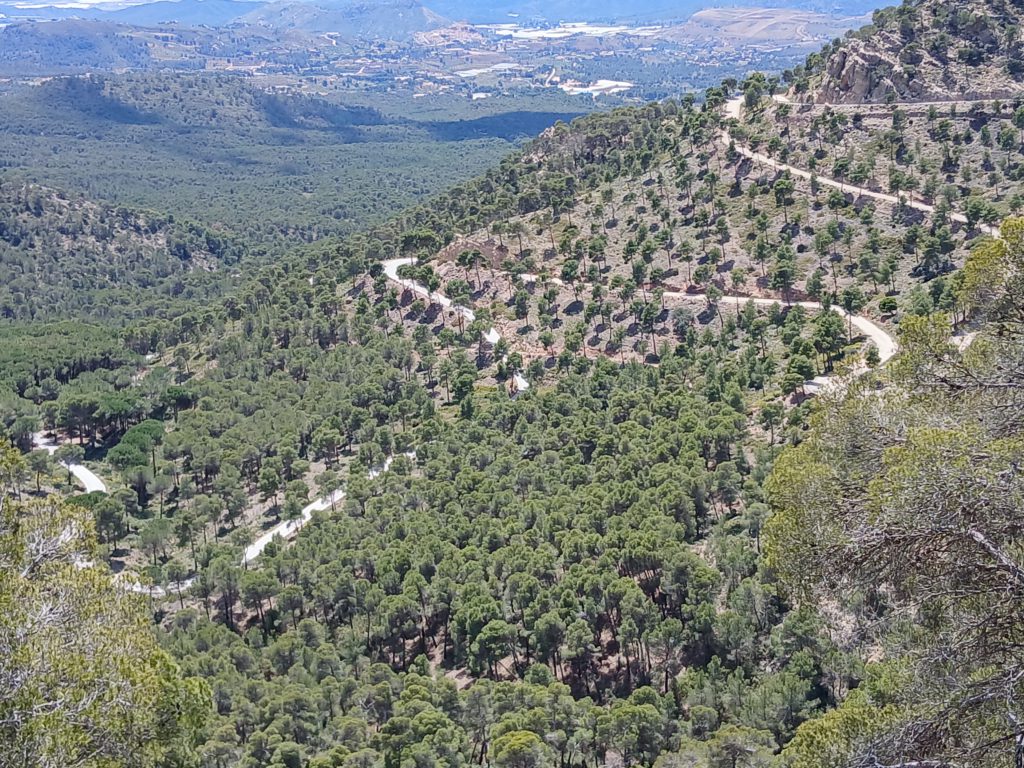
On the way to the finca, Elias has us stop at one of the only local restaurants in the area. The food is economical, cheap, and very plentiful. I am stuffed with 4 courses, along with beer.
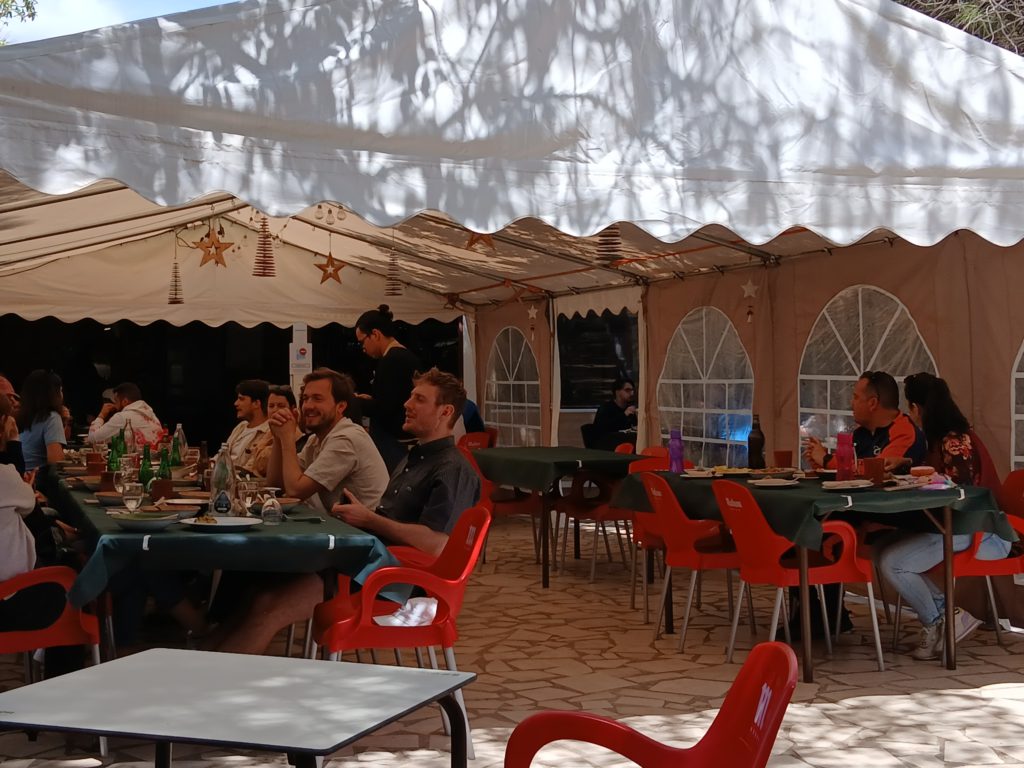
As we’re finally leaving, Elias spots Antonio, the lemon grower from yesterday, his two kids and his brother. They invite us to join them and another hour of drinks and conversation ensues, ending with shots of mantellina, a very local liqueur homemade with lemon, anise, and honey. It goes down smoothly — too smoothly. By the time we leave, I’ve consumed far more alcohol than usual. I’m not feeling anything but I’m sure I’m close. If home weren’t just a mile away, along a deserted road, I might have to take precautionary measures to get us there. My concerns turn out to be pointless as I get no hint of intoxication or after effects. I am, however, so stuffed with food and beverage that my siesta flows smoothly into the night’s sleep.
Tuesday morning, after a simple breakfast with Elias, I pack up and head further south to my next destination. My stay on the finca has been very different from any of my other Spanish experiences — a real treat thanks to a devoted host and guide.







